On Thursday the 28th September, we welcomed Professors Takayuki Kohchi and Ryuichi Nishihama, from Kyoto University, Japan, to the Botanics. Professor Kohchi’s lab is renowned for their evolutionary and developmental work on photomorphogenesis, growth phase transition, phytohormone signaling, meristem function, cell division, and cell differentiation in land plants, using the complex thalloid liverwort Marchantia polymorpha as a model organism.
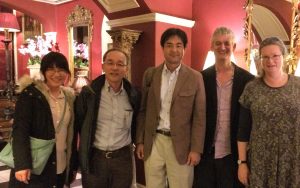
Yen-Ting Lu (U of E), Profs Takayuki Kohchi & Ryuichi Nishihama (Kyoto University), and Drs Justin Goodrich (U of E) & Laura Forrest (RBGE) at Prestonfield House, Edinburgh
Accompanying them was their host for this trip, from the University of Edinburgh, Dr Justin Goodrich, and his PhD student Yen-Ting Lu, who is using Marchantia polymorpha as a model organism to investigate the role of a gene called ZOU.
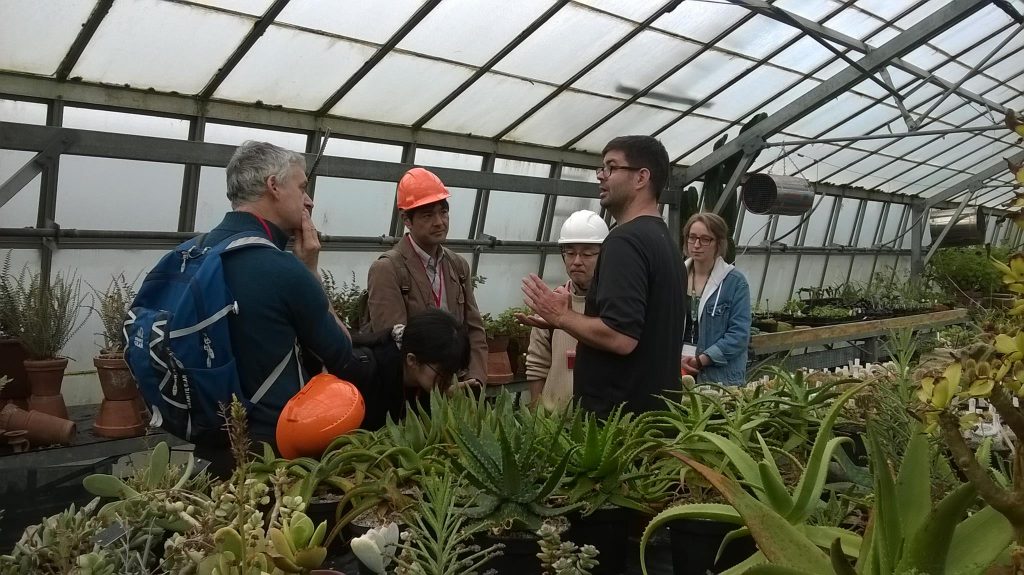
Horticulturalist Gunnar Ovstebo on growing bryophytes (and some other plant lineages) in the Research Collection
Our guests are, of course, very familiar with growing laboratory lineages of Marchantia polymorpha, in different situations and on a variey of media. However, we took the opportunity to give them a tour of our own living collection, which includes several accessions of Marchantia in the Research Collection, comprising at least three different species.
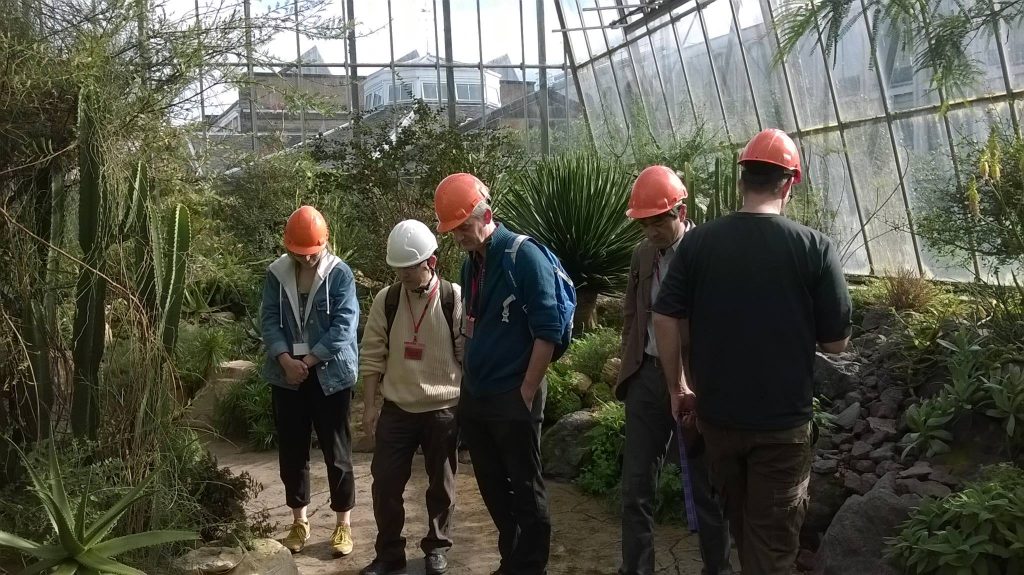
Horticulturalist Gunnar Ovstebo describes the diversity and cultivation of bryophytes in the Arid House
We were also able to show them the seven accessions of complex thalloid liverwort Plagiochasma, from Texas, US, Yunnan, China and from Saudi Arabia, that are on public display in the Arid House. Hard hats are not normally required, but our front range glasshouses were closed to the public for inspection and maintenance work, and we were generously granted access on the proviso that we took appropriate precautions.
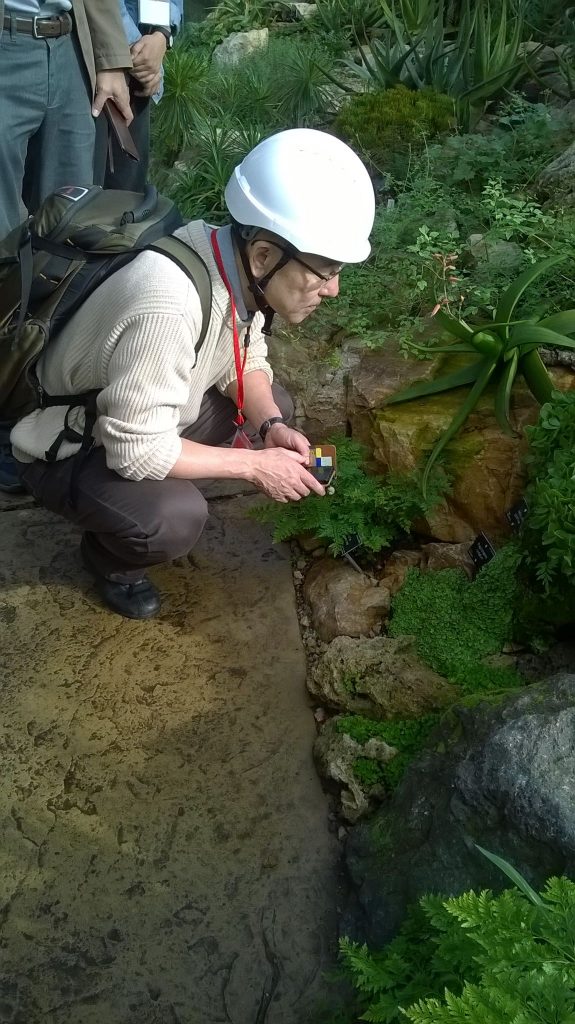
Prof Takayuki Kohchi examines a carpet-forming accession of complex thalloid liverwort Plagiochasma that was wild collected in Yunnan, now growing in the Arid House
Following the tour of the glasshouses, we had a quick visit to the Herbarium, where Dr Neil Bell pulled out some of the more spectacular mosses in our collections.
I’m not sure that we have any converts from Marchantia polymorpha, the nuclear genome of which has just been sequenced by a collaborative team including Professor Takayuki Kohchi, and is due to be published this month. However, it seems likely that this spotlight on Marchantia, with better understanding of gene functions, will cast illumination on morphological adaptations in the rest of the complex thalloids.

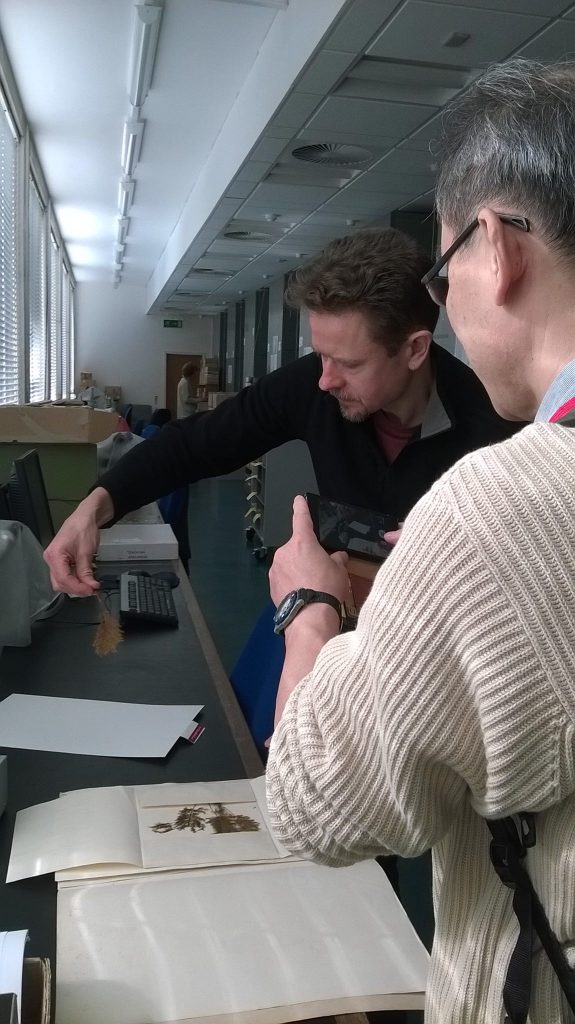
Dr. Shashikant J. Chavan
Nice & infirmative aspect